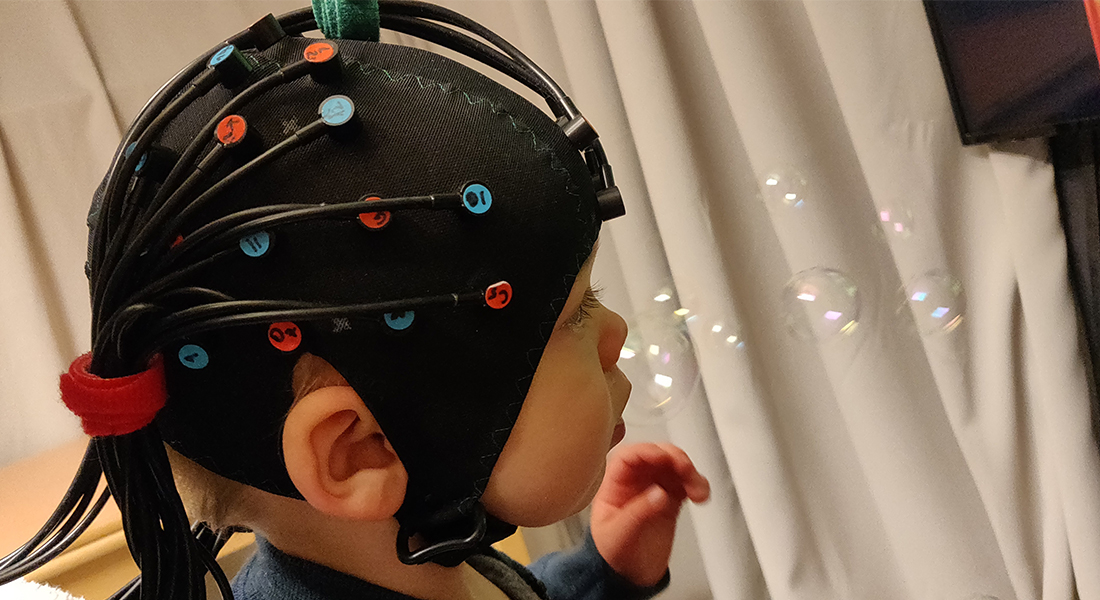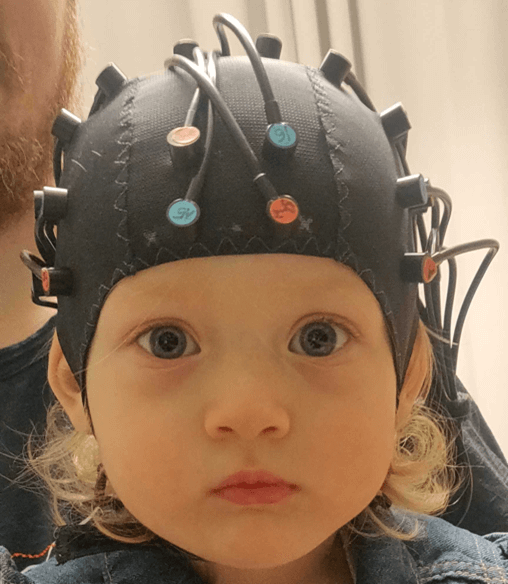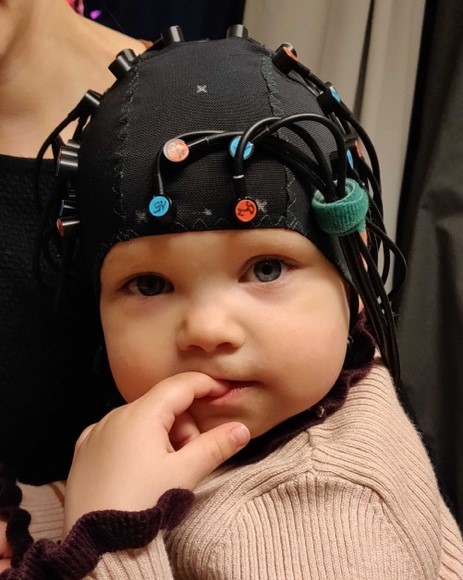fNIRS
Do babies know what we think? Which brain regions are involved in learning to understand others? In this study we are interested in finding out how young children learn to understand others.

In the study, we particularly focus on young children's ability to understand other people's perspectives on the world, namely what these people can see, what they know or don't know, and what thoughts they have about the world, and that these perspectives can be different from your own own.
In order to be able to investigate these questions and how such information about others is processed in the brain, we use the method "Near Infrared Spectroscopy (NIRS)".
In the examination, the child is put on a cap (similar to a bathing cap) which has small infrared lights and cameras. This allows us to record which areas of the brain are active while the children watch short videos of a person looking for a ball. Sometimes the person can see a hand puppet come and steal the ball, so therefore the person knows where the ball is. However, in other videos, the person does not see the ball being taken, and therefore thinks that the ball is still in the original location and therefore has to look for the ball there as well. By looking at the toddlers' brain activity, we investigate whether children already at the age of 16-20 months process these two scenarios differently, and whether their expectations of where the person will look for the ball depends on whether the person really knows where the ball is.
 |
 |
| Charlotte Grosse Wiesmann Independent Research Group Leader Milestones of Early Cognitive Development Max Planck Institute for Human Cognitive and Brain Sciences |
 |
|
PhD, Professor
victoria.southgate@psy.ku.dk |
 |
| Dimitrios Askitis PhD in Mathematics Postdoc dimitrios.askitis@psy.ku.dk |
 |
Om studiet
fNIRS began in November 2020 and was completed in October 2021.
Contact
Charlotte Grosse Wiesmann
Independent Research Group Leader
Max Planck Institute for Human Cognitive and Brain Sciences
